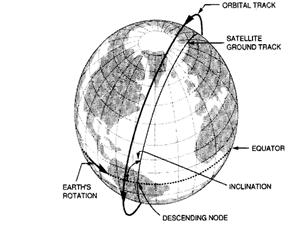- Delhi’s air quality has reached hazardous levels, despite a reported five-year decline in stubble burning in Punjab.
- Experts suggest under-reporting of fire incidents due to limitations in the current satellite-based tracking system as Aerosol levels in the atmosphere have not decreased proportionally with the decline in fire counts.
- Fire counts are monitored using the Visible Infrared Imaging Radiometer Suite (VIIRS) on Suomi-NPP and NOAA-20 (National Oceanic and Atmospheric Administration) polar-orbiting satellites.
- These satellites observe wildfires twice daily and may miss fires ignited and extinguished outside this timeframe.
- Data from the Korean GEO-KOMSAT 2A satellite, which provides continuous monitoring, indicates spikes in fires and aerosols in the late afternoon in Punjab.
| Visible Infrared Imaging Radiometer Suite (VIIRS) The Visible Infrared Imaging Radiometer Suite (VIIRS) is a whiskbroom radiometer that captures global satellite data across visible and infrared wavelengths. It features 22 channels, including high-resolution, moderate-resolution, and an ultra-sensitive Day/Night Band for improved nighttime light observation. VIIRS, onboard the Suomi National Polar-orbiting Partnership and NOAA satellites, supports climate monitoring through applications like cloud and aerosol analysis, ocean and land surface temperature, and Earth’s albedo. |

- Polar-orbiting satellites pass over the same location on Earth only after a specific period typically once or twice a day.
- This limits their ability to provide real-time or frequent data for any single location.
- The satellite’s high speed due to lower altitude results in brief coverage over a particular area, reducing the time available for observation.
- Despite covering the entire globe over time, each pass captures data for only a narrow swath of Earth.
- Polar orbits are usually medium or low orbits (approximately 700-800km) compared to geosynchronous orbits.
- Figure shows the multiple orbits of a satellite in a typical near-polar orbit.
Dig Deeper: Read about innovative technologies like Happy Seeder as an alternative for Stubble burning.

